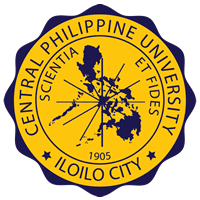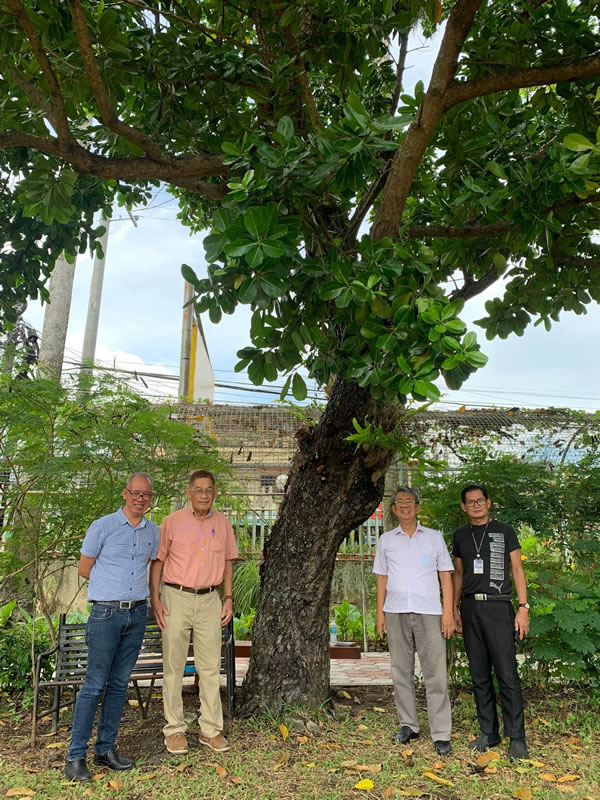By Cyrus A. Natividad
CPUAAI President Jeremy Bionat (2nd from Right), Dr. Manny Palada (3rd from Right with Timothy Arandela and Cyrus Natividad under the Bitaog tree.
Since the start of his term as CPUAAI President, Atty. Jeremy V. Bionat has pointed out several projects related to sustainable campus development. Bionat, a well-known environmentalist, also keenly observes natural resources. A researcher whose passion is gathering endangered classes of medicinal as well as ornamental plants, he identifies trees – among many others, yet unnamed and existing inside the CPU campus.
He gathered that, “Many of these endemic trees need to be grown in order to sustain the environment.” He added that “Some of the trees I discovered have medicinal essences, other than being a hard wood.”
Before lunch, he shared some amazing facts to his guests at the CPU Alumni Affairs Office; about why a lot of places in Iloilo are named after plants and trees. He explained how a bus terminal area in Jaro named “Tagbak” is after a plant that has a repellent, antimicrobial, free radical scavenging properties. Bionat also mentioned a barangay named Butong, in Oton Iloilo that once had a profusion of Bamboo. “Butong is a young shoot of bamboo”, he explained.
He said, “The big part of CPU area is called “Dungon” a hard wood – that after many years of cutting them down by the inhabitants, it is now hard to find. Bionat clarified that clans in Dungon have used them as boat keels and other purposes.
The replacement and propagation of the endangered Dungon trees along a large area of Brgy. Dungon in Jaro (including a large part of the 24-hectare CPU), is a priority project listed in our environmental outreach activities this year.
Later after lunch, the CPUAAI president invited his guests, Dr. Manny Palada, Mr. Timothy Arandela and Mr. Natividad to see an indigenous tree which is unknown to them, near the CPU perimeter fence along Lopez Jaena St. He immediately informed everyone that the tree is called “Bitaog”, and its scientific name is “Calophyllum inophyllum”.
The guests thanked him for the hearty lunch, and for the significant Dungon tree, the name of which they’ve learned only now.

